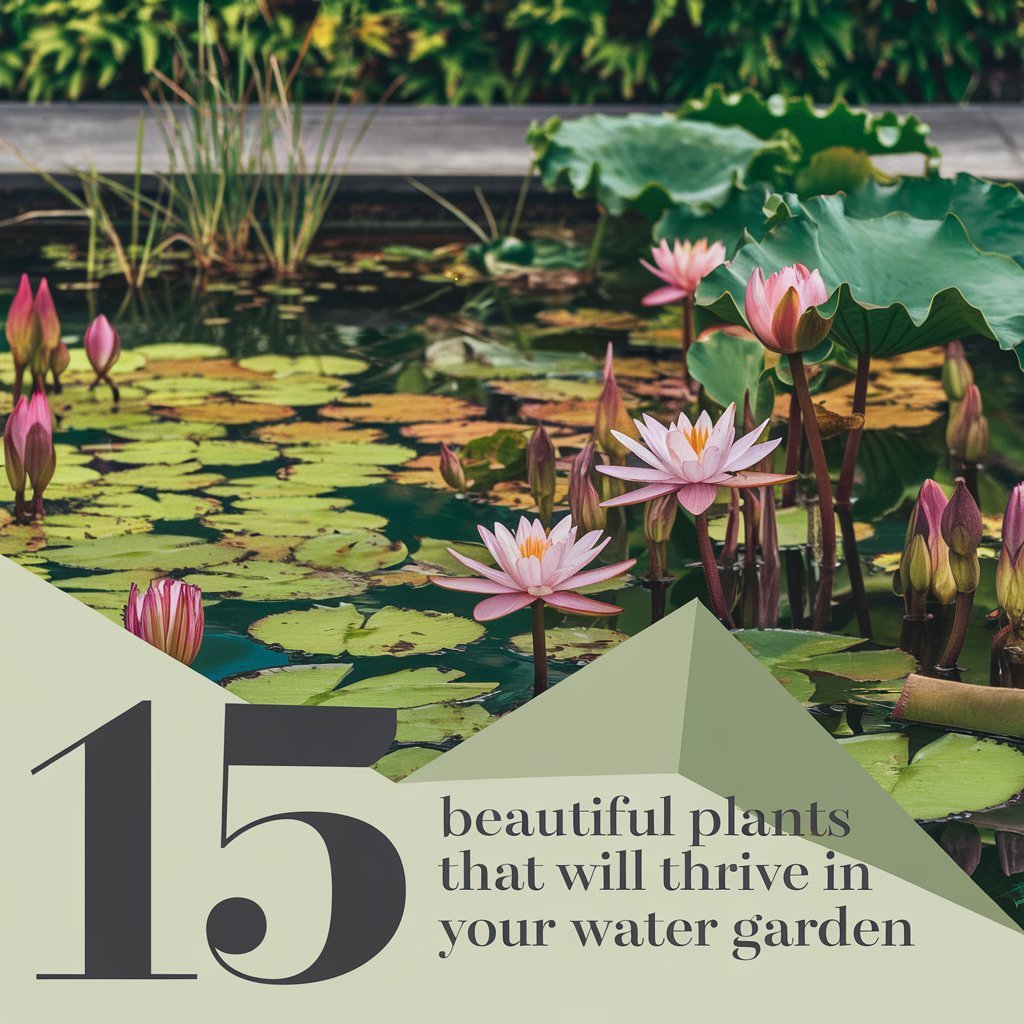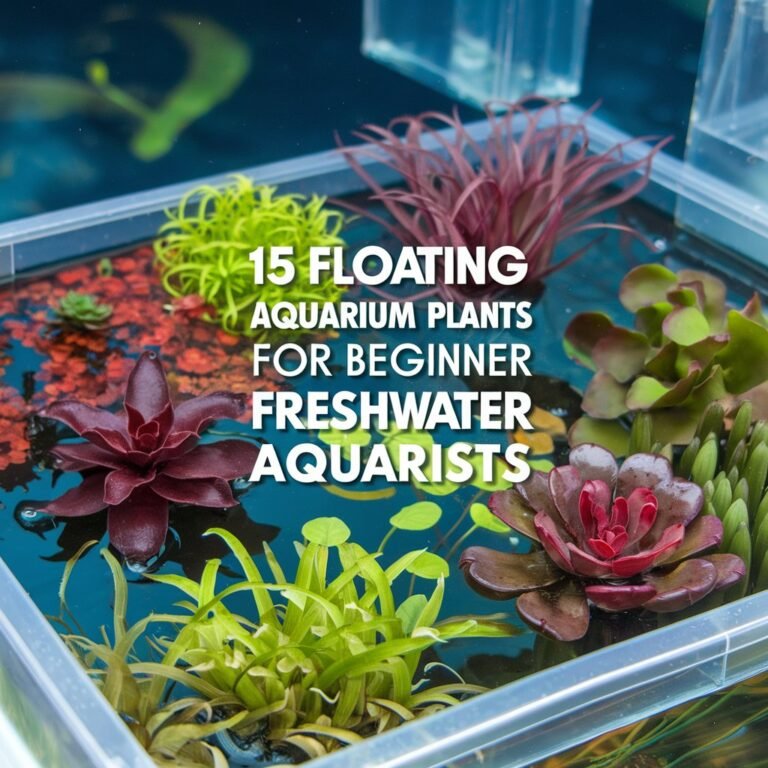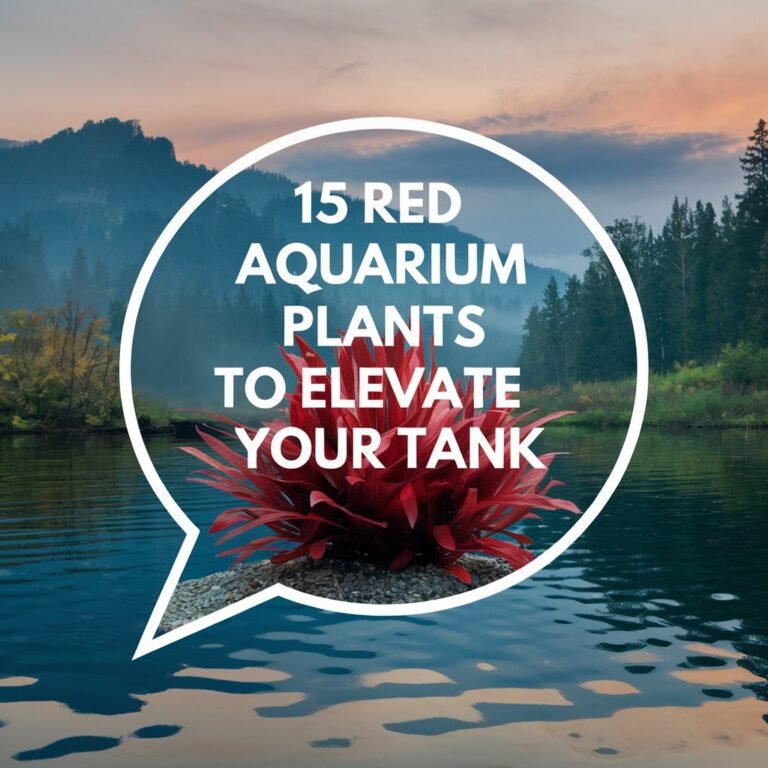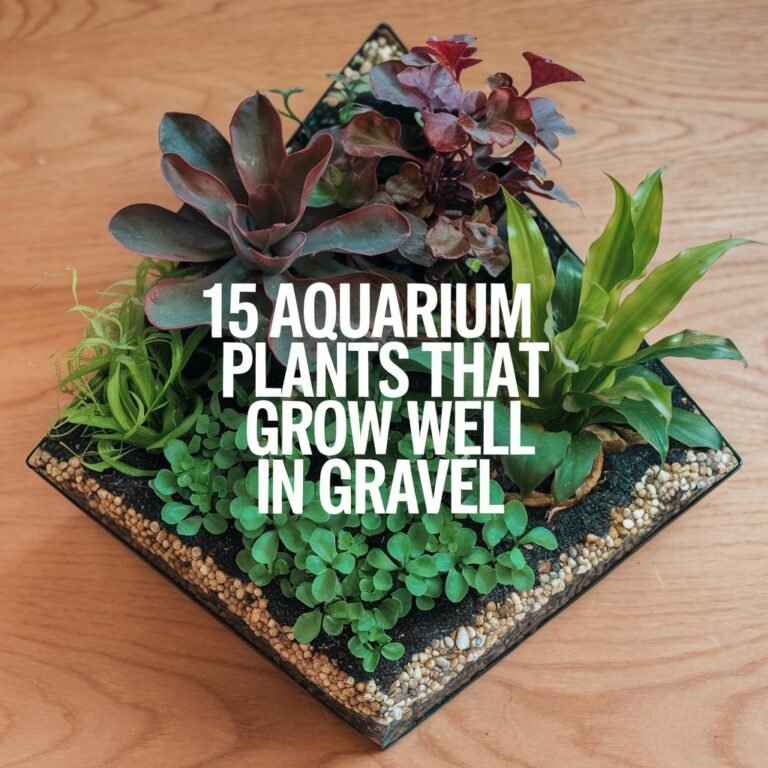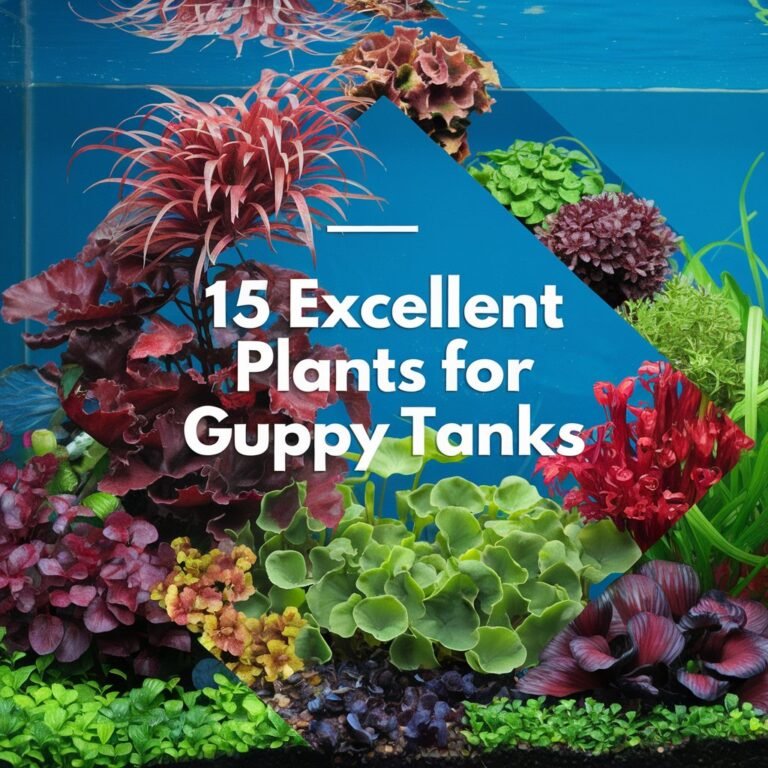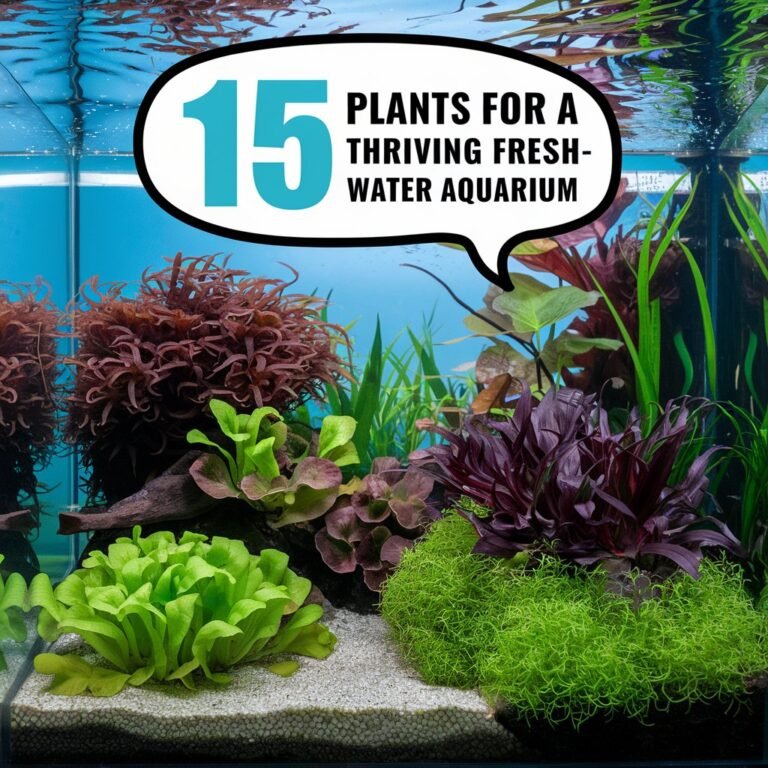15 Beautiful Plants For Your Water Garden
As you envision your ideal water garden for 2024, you’re likely considering which plants will not only thrive in their environment but also elevate the space’s aesthetic appeal. From symbolic lotus plants to vibrant water hyacinths, there are numerous options to choose from.
But with so many varieties available, it can be challenging to narrow down the best options for your unique space. Fortunately, there are 15 beautiful plants that stand out from the rest – and they’re not just visually stunning, but also provide ecosystem benefits and attract wildlife. But which ones will you choose?
In A Nutshell
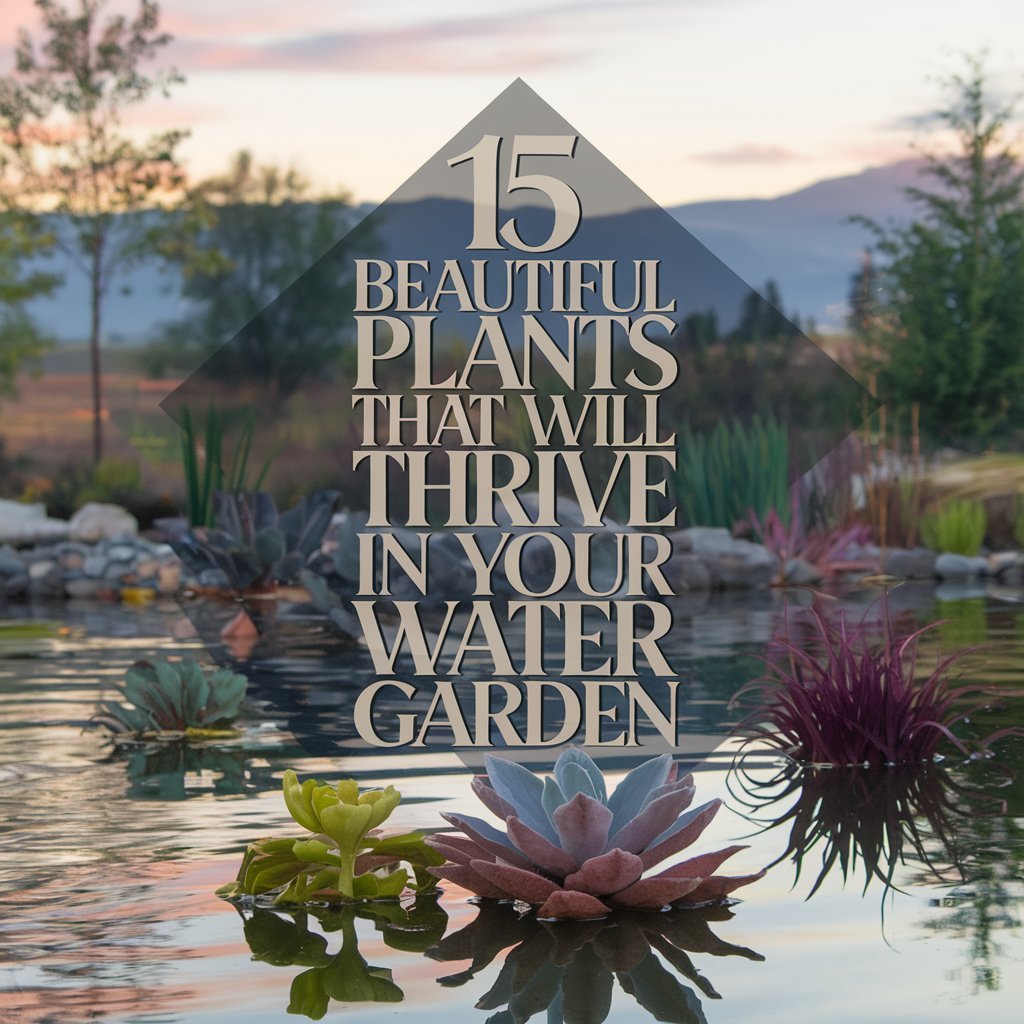
- Lotus Plants symbolize spiritual growth and require full sun to partial shade with regular fertilization.
- Water Hyacinths thrive in warm temperatures and full sun to partial shade with ‘Ornamental’ varieties having more vibrant flowers.
- Amazon Water Lilies need slow-moving or still water, full sun to partial shade, and a nutrient-rich aquarium soil mix for growth.
- Submerged Water Grasses provide aquatic ecosystem benefits and thrive in low-light conditions with a water flow rate of 1-2 feet per second.
- American Cattail Plants serve as a natural food source and habitat for wildlife, maintaining water quality by absorbing excess nutrients and filtering pollutants.
Lotus Plants
Lotus plants, with their breathtaking water lilies and unique, rhizomatous growth habit, can instantly elevate the aesthetic of a water garden.
When you’re considering adding lotus plants to your water garden, it’s crucial to understand their specific needs. Lotus care tips include providing full sun to partial shade, as well as water that’s at least 4-6 inches deep.
You’ll also need to fertilize your lotus plants regularly, using a balanced, water-soluble fertilizer.
In addition to their physical needs, lotus plants also have rich symbolism meanings.
In many Eastern cultures, the lotus is seen as a symbol of spiritual growth and enlightenment. It’s vital to remember that it’s also often associated with rebirth and renewal, as it blooms in the morning and closes at night.
When you’re choosing a lotus plant for your water garden, consider the specific symbolism meanings that resonate with you.
By providing the right care and attention, you can enjoy the beauty and symbolism of your lotus plant for years to come.
With proper care, lotus plants can thrive in your water garden, adding a touch of elegance and serenity to your outdoor space.
Water Hyacinths
If you’re looking for another stunning addition to your water garden, consider the beautiful water hyacinths.
These free-floating aquatic plants are known for their vibrant purple flowers and round, flat leaves that can grow up to 6 inches in diameter. When it comes to Water Hyacinth Care, it is vital to provide them with full sun to partial shade and warm water temperatures between 65°F and 85°F.
There are several Hyacinth Varieties to choose from, including ‘Ornamental’ and ‘Common’, each with its unique characteristics.
‘Ornamental’ varieties tend to have more vibrant flowers and are often used for decorative purposes. On the other hand, ‘Common’ varieties are more aggressive growers and can be used for water filtration and erosion control.
To keep your water hyacinths healthy, make sure to fertilize them regularly and control their growth to prevent overcrowding.
You can also propagate them by dividing the plantlets that grow on the mother plant. With proper care, water hyacinths can thrive in your water garden and provide a beautiful display of color and texture.
Regular maintenance is key to keeping these plants under control and enjoying their beauty.
Amazon Water Lilies
About two-thirds of all known water lily species originate from the Americas, with many species of Amazon Water Lilies offering breathtaking beauty and elegance to your water garden.
These plants thrive in Amazonian habitats characterized by slow-moving or still water with depths between 1-4 feet. You’ll want to replicate these conditions in your water garden to guarantee ideal growth.
When it comes to Water lily care, it’s vital to provide Amazon Water Lilies with full sun to partial shade.
Plant them in a container with a minimum depth of 12-18 inches, using a nutrient-rich aquarium soil mix. Fertilize them regularly during the growing season with a balanced, water-soluble fertilizer.
You’ll also need to maintain a water temperature between 65-85°F (18-30°C) and pH levels between 6.5-8.5.
To promote healthy growth and blooming, you should also divide and repot your Amazon Water Lilies every 2-3 years.
Remove dead or dying plant material, and trim back old growth to maintain their shape and encourage new growth.
Submerged Water Grasses
While Amazon Water Lilies add beauty to the surface of your water garden, submerged plants like Submerged Water Grasses play a vital role in maintaining water quality and providing a habitat for aquatic life.
These underwater grasses are ideal for water gardens with a depth of 1-4 feet, as they thrive in low-light conditions. You’ll want to plant them in areas with a water flow rate of 1-2 feet per second to prevent sediment buildup.
Submerged Water Grasses provide numerous aquatic ecosystem benefits. They help to maintain water quality by absorbing excess nutrients, reducing algae growth, and stabilizing the water’s pH levels.
Additionally, they create a habitat for aquatic life, such as fish, snails, and insects, by providing shelter and food. As a submerged plant, they also help to reduce water turbulence, which can lead to erosion and sedimentation.
American Cattail Plants
Planting American Cattail Plants in your water garden can greatly enhance its aesthetic appeal and ecological balance. These plants, scientifically known as Typha latifolia, are one of the most recognizable aquatic plants in North America, providing numerous benefits to your water garden.
The cattail benefits include serving as a natural food source and habitat for wildlife, such as birds, fish, and amphibians. They also help maintain water quality by absorbing excess nutrients and filtering out pollutants.
When it comes to cattail maintenance, you’ll find that these plants are relatively low-maintenance. They thrive in full sun to partial shade and can tolerate a wide range of water depths, from 2 to 6 feet.
Cattails prefer slightly acidic to neutral water pH, between 6.0 and 7.5. Regular maintenance involves controlling their spread, as cattails can become invasive if not monitored. You can achieve this by removing any dead or dying foliage and rhizome fragments.
With proper care, American Cattail Plants can become a stunning addition to your water garden, providing year-round interest and beauty. By incorporating cattails into your water garden design, you’ll be creating a thriving ecosystem that benefits both plants and wildlife.
Parrot’s Feather Flowers
One of the most distinctive and versatile aquatic plants you can add to your water garden is the Parrot’s Feather Flower, scientifically known as Myriophyllum aquaticum.
Native to South America, this plant has adapted to thrive in freshwater habitats and can tolerate a wide range of water conditions, from still to slow-moving water.
When cultivating Parrot’s Feather Flowers in your water garden, you’ll need to provide them with full sun to partial shade and water depths of 1-12 inches.
Parrot’s Feather Flowers are an excellent choice for aquatic ecosystems, as they provide shelter and food for various aquatic species.
They’ve delicate, lacy foliage that resembles a parrot’s plumage, which adds a unique texture to your water garden.
These plants can grow up to 12 inches tall and spread 6-8 inches wide, making them ideal for containers or in-ground planting.
When grown in ideal conditions, Parrot’s Feather Flowers can help maintain water quality by absorbing excess nutrients and preventing algae growth.
Papyrus Reed Plants
Adding a dramatic vertical element to your water garden can be achieved by incorporating Papyrus Reed Plants, scientifically known as Cyperus papyrus.
These aquatic plants are native to Africa and can grow up to 16 feet tall, making them an ideal choice for creating a striking focal point in your water garden.
When it comes to papyrus reed care, you’ll want to guarantee they receive full sun to partial shade and are submerged in water that’s at least 6 inches deep.
In terms of papyrus reed landscaping, you can plant them in containers or directly in the ground, as long as the soil is rich in organic matter.
It’s also essential to provide them with a wide enough space to accommodate their growth, as they can spread up to 3 feet wide.
Regular pruning is necessary to maintain their shape and promote healthy growth.
You can also divide and replant them every 2-3 years to keep them thriving.
White Pondweed Varieties
Several white pondweed varieties can be used to introduce texture and visual interest to your water garden.
These aquatic plants are native to freshwater habitats and play a vital role in maintaining the balance of aquatic ecosystems. They’re characterized by their long, slender stems and small, white flowers that bloom in the summer months.
When selecting white pondweed varieties for your water garden, consider the specific growing conditions required by each species.
Potamogeton alpinus, for example, thrives in cooler waters with a pH range of 6.5-8.5, while Potamogeton natans prefers warmer waters with a pH range of 7.0-9.0. Both species can tolerate a range of water depths, from 1-4 meters.
To guarantee the health and longevity of your white pondweed plants, maintain good water quality and provide adequate nutrients.
Regularly monitor water temperature, pH, and nutrient levels to prevent excessive algae growth and maintain a balanced ecosystem. By doing so, you can create a thriving aquatic environment that showcases the beauty of white pondweed varieties.
Horsetail Equisetum Species
In a water garden, incorporating Horsetail Equisetum species can be a deliberate design choice that brings a unique texture and structural element to the aquatic landscape.
You’ll want to research Equisetum history to understand its adaptability and resilience. This ancient plant genus has been around since the Devonian period, over 400 million years ago.
Its ability to thrive in diverse environments makes it an ideal choice for water gardens.
When incorporating Horsetail Equisetum species into your water garden, consider the benefits it provides.
Horsetail benefits include natural filtration, as it absorbs and stores nutrients from the water.
Its hollow, tube-like stems also provide shelter for aquatic life.
Additionally, Horsetail’s ability to grow in dense colonies helps to prevent algae growth and maintain water clarity.
To guarantee the success of your Horsetail Equisetum species, provide it with partial shade to full sun and a pH range of 6.0-8.0.
Plant it in shallow water, typically 1-6 inches deep, and maintain a consistent water level.
With proper care, Horsetail Equisetum species can become a striking and functional addition to your water garden.
Pink Water Lotus Blooms
Cultivating Pink Water Lotus blooms requires attention to detail and a well-planned environment.
When you’re planning to incorporate these beautiful plants into your water garden, vital to bear in mind the water’s temperature, pH, and quality. Pink Water Lotus typically thrive in warm pink water with a temperature ranging from 75°F to 87°F (24°C to 31°C).
The ideal pH for Lotus care is between 6.5 and 8.5, and you’ll need to guarantee that the water is free of pollutants and excessive nutrients.
To promote healthy growth and blooming, you’ll need to provide your Pink Water Lotus with a minimum of 6 hours of direct sunlight per day.
It’s also vital to fertilize your Lotus plants regularly, using a balanced, water-soluble fertilizer.
When planting, make sure to use a shallow container with a wide surface area, as this will help to prevent the soil from becoming waterlogged.
Proper Lotus care also involves regular maintenance, including pruning dead or dying leaves and flowers to promote new growth and prevent decay.
Calla Water Caltrops
You’ve successfully grown Pink Water Lotus in your water garden, and now you’re seeking to add another striking plant to complement its beauty.
Calla Water Caltrops, also known as Water Calla, is an excellent choice. This aquatic plant is ideal for water gardens, as it thrives in shallow water and can tolerate a range of temperatures.
Calla Water Caltrops produces stunning white flowers, which symbolize beauty, elegance, and sophistication in Calla flower meanings.
To guarantee your plant blooms profusely, maintain top-notch aquatic plant maintenance. Plant the rhizomes in a container with a soil depth of at least 6 inches, and place it in an area with partial shade to full sun.
Water levels should be between 2-4 inches above the soil surface, and pH levels should be between 6.0-7.5.
Regularly check for pests and diseases, and fertilize during the growing season to promote healthy growth.
Divide and replant the rhizomes every 2-3 years to maintain the plant’s vigor.
Nasturtium Flower Arrangements
Adding a touch of elegance to your water garden can be achieved with the Nasturtium’s vibrant blooms and unique arrangement style.
When creating Nasturtium flower arrangements, consider the plant’s meanings and symbolism. In the language of flowers, Nasturtiums often symbolize conquest, victory, and patriotism.
They can also represent a desire to be free and unrestricted. To incorporate these meanings into your arrangement, choose a container that complements the plant’s delicate, crepe-paper-like blooms.
When selecting Nasturtium flowers for your arrangement, choose a mix of colors to add depth and visual interest. Nasturtiums come in a variety of shades, including yellow, orange, red, and cream.
Consider pairing them with complementary flowers, such as blue delphiniums or purple irises, to create a striking contrast. To add texture and dimension to your arrangement, incorporate some of the plant’s delicate foliage and stems.
Colorful Hornwort Mosses
As you explore the diverse world of water garden plants, your attention turns to the vibrant, low-maintenance option of Hornwort mosses.
These aquatic plants, scientifically known as Ceratophyllum demersum, are perfect for adding color and texture to your water garden. With no true roots, Hornwort mosses absorb nutrients from the water, making them an excellent choice for Moss landscaping.
When it comes to Aquatic decoration, Hornwort mosses offer a lot of versatility.
They can be used as a floating plant, attached to rocks or driftwood, or even planted in the substrate. Their delicate, feathery foliage creates a beautiful display of color, with shades ranging from light green to dark brown.
Hornwort mosses are also great for providing shelter and food for fish and other aquatic animals.
To keep your Hornwort mosses thriving, guarantee they receive adequate light and nutrients.
Regular pruning will also help maintain their color and prevent them from overgrowing.
With proper care, these beautiful plants will continue to add vibrancy and life to your water garden.
Fanwort Floating Aquatics
Fanwort, a floating aquatic scientifically known as Cabomba caroliniana, is a versatile and attractive plant that brings depth and visual interest to your water garden.
It’s a fast-growing species that thrives in warmer temperatures, typically above 72°F (22°C), and partial shade. You’ll want to provide fanwort with a moderate water flow and maintain pH levels between 6.5 and 7.5.
When it comes to fanwort care tips, you should guarantee it gets sufficient nutrients.
You can achieve this by adding a balanced fertilizer to the water. It’s also essential to trim the plant regularly to prevent overgrowth and maintain its shape. You should prune the tips of the stems to encourage branching.
Fanwort propagation methods are relatively straightforward.
You can propagate fanwort by cutting sections of the stem, typically around 2-3 inches (5-7.5 cm) long. Remove lower leaves and plant the cuttings in the substrate or a floating basket. Make sure the cuttings are submerged in water with adequate nutrients.
With proper care and propagation, fanwort can be a stunning addition to your water garden, providing a lush, green habitat for aquatic life.
Kabochna Yellow Flowers
While selecting plants for your water garden, you’ll want to ponder Kabochna Yellow Flowers, scientifically known as Nymphoides peltata, for their vibrant blooms and ability to thrive in a variety of aquatic environments.
This plant species, commonly found in tropical and subtropical regions, features round, floating leaves with stems that grow up to 6 feet in length.
The term ‘Kabochna’ has Slavic origins, translating to ‘pumpkin’ in some languages, which is fitting given the plant’s resemblance to a pumpkin when it produces small, yellow flowers with five petals.
The vibrant yellow hue symbolizes sunshine, happiness, and warmth in various cultures. Yellow flowers, particularly Kabochna Yellow Flowers, add an attractive contrast to your water garden, making it an inviting and picturesque spot.
In terms of maintenance, Kabochna Yellow Flowers require moderate care, thriving in partial shade and warm water temperatures ranging from 75°F to 86°F (24°C to 30°C).
Guarantee proper nutrient intake and sufficient space for the plant’s sprawling growth to keep your Kabochna Yellow Flowers flourishing.
Frequently Asked Questions
How Often Should I Fertilize My Water Garden Plants?
You’ll want to follow a balanced fertilizer schedule, checking nutrient levels regularly to avoid over- or under-fertilizing your water garden plants – typically, you’ll fertilize every 1-2 weeks, but this depends on plant type and growth rate.
Can I Grow Water Plants in a Small Space or Container?
You can grow water plants in small spaces using container options like self-watering planters or vertical gardens, which serve as space savers, allowing for efficient use of limited areas and ideal plant growth.
How Do I Control Algae Growth in My Water Garden?
To control algae growth, you’ll monitor nutrient levels and maintain ideal water circulation. You can install UV clarifiers to inhibit algae blooms, and perform regular water changes to prevent excessive nutrient buildup and reduce algae growth.
Are Water Garden Plants Safe for Fish and Other Aquatic Animals?
You need to be cautious, as certain aquatic plants can release Toxic Plant Risks harming your aquatic animals, while establishing clear Aquatic Safe Zones requires considering all plant species and their interactions with fish and other aquatic life.
How Do I Protect My Water Garden From Extreme Weather Conditions?
You’ll need to implement weatherproofing strategies to safeguard your water garden from extreme weather conditions. Consider installing a storm surge prevention system, such as a floating barrier or a reinforced pond liner, to minimize damage.
FInal Verdict
By incorporating these 15 plants into your water garden, you’ll create a thriving ecosystem that not only adds visual appeal but also promotes water quality and supports local wildlife.
The combination of submerged plants, floating aquatics, and emergent species will provide a balanced environment that filters out pollutants and maintains prime water conditions. This carefully selected plant palette guarantees a resilient and biodiverse water garden that will flourish in 2024.

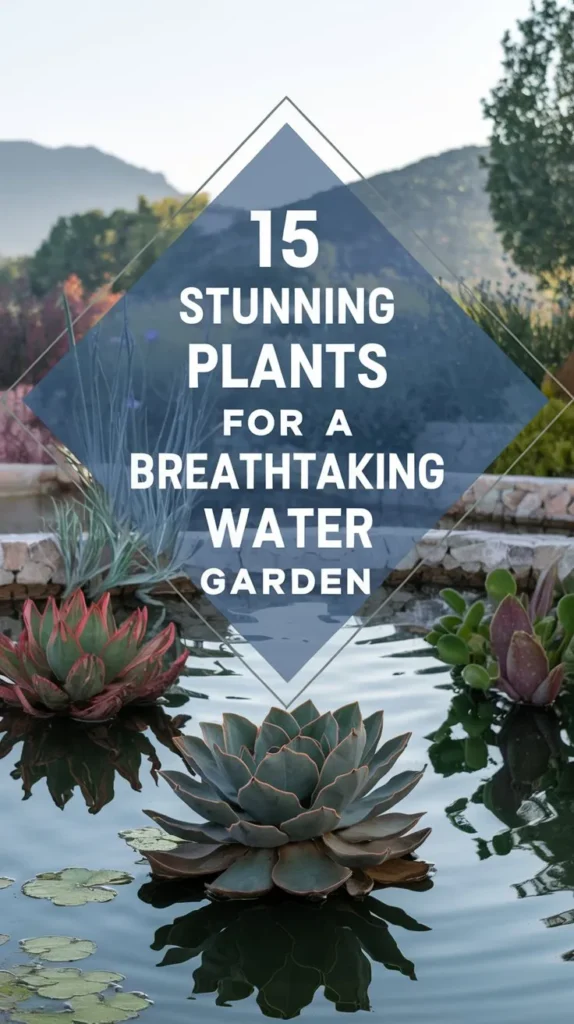

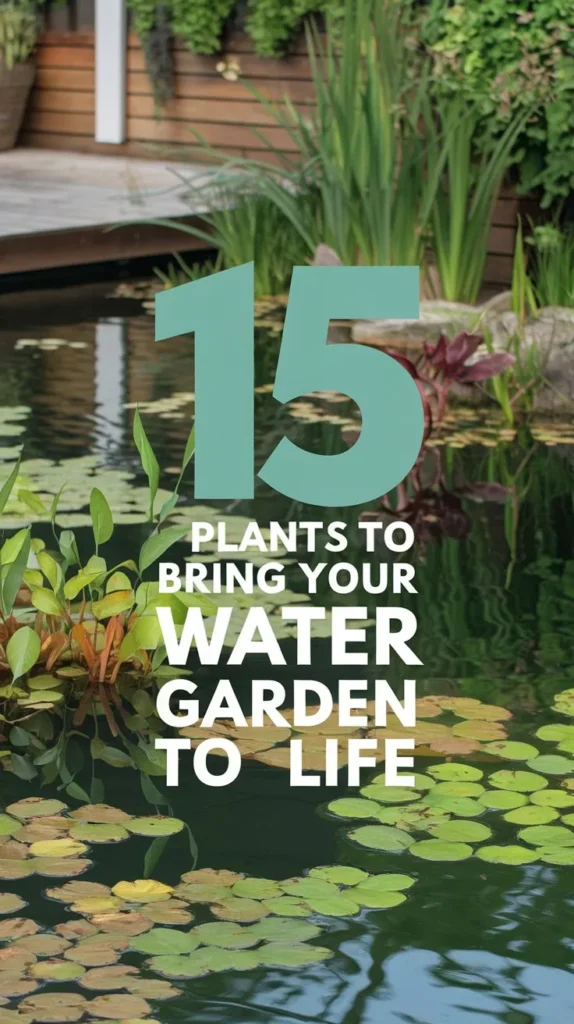
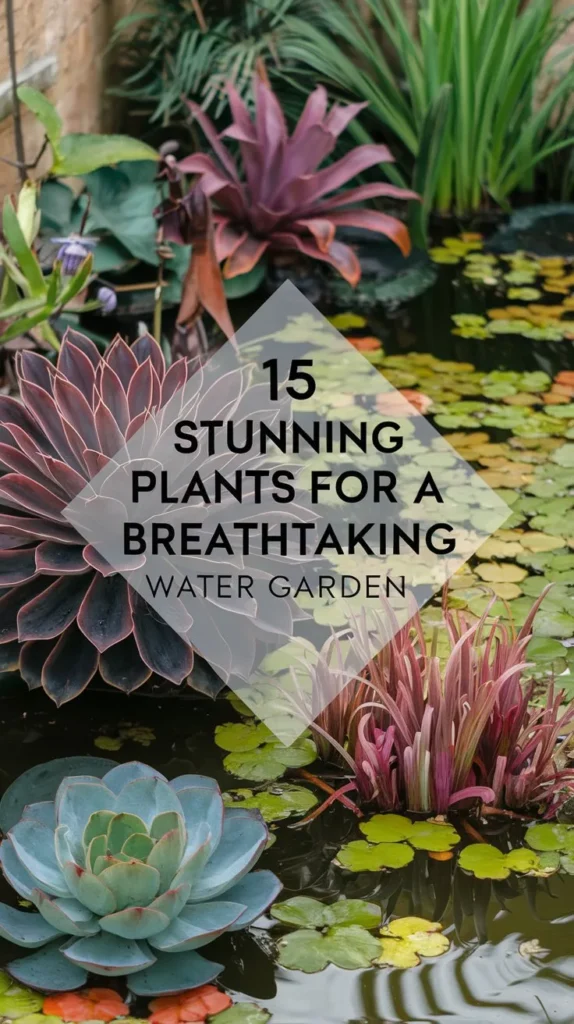

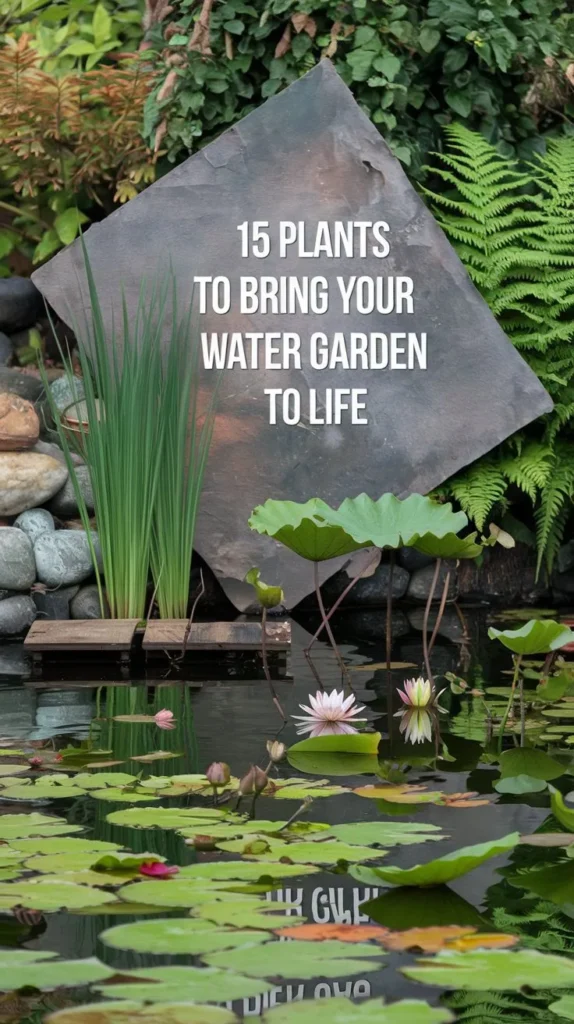
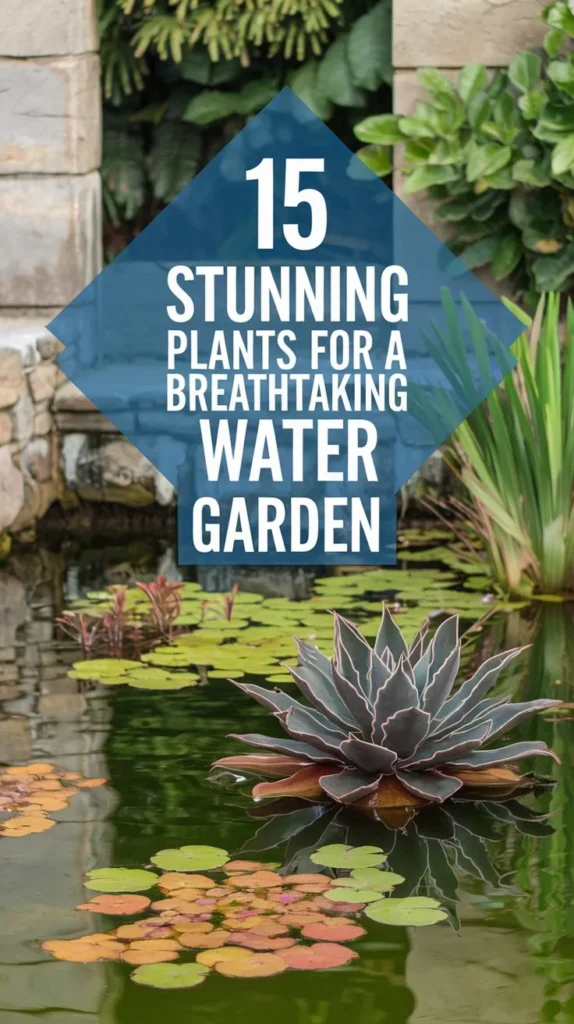
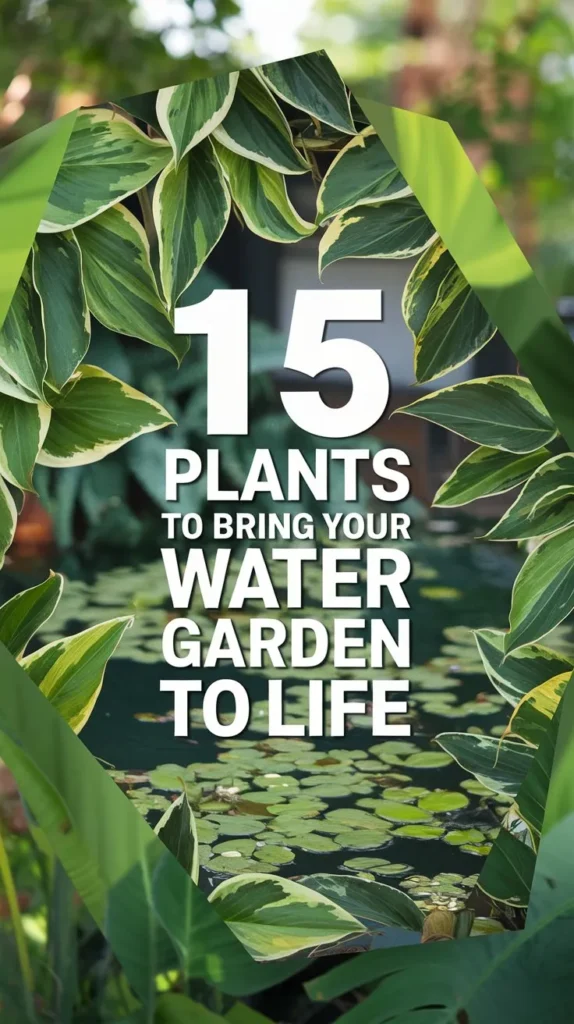
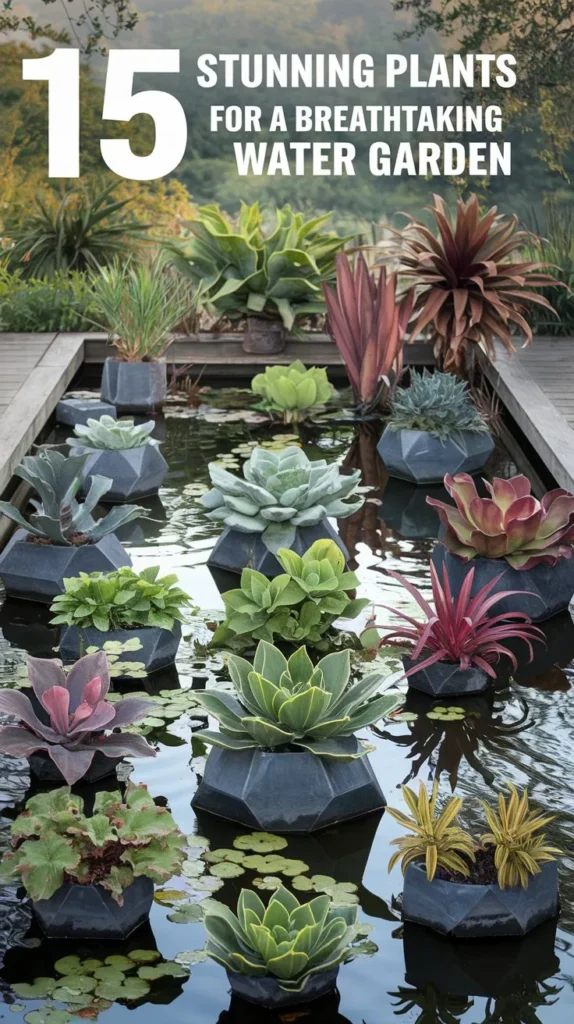

Hello, I’m Aria Cooper, the heart and soul behind Swimmy Buddies. As a devoted fish aficionado, I share my aquatic adventures and expertise to inspire your own underwater explorations. 🐠🌊

